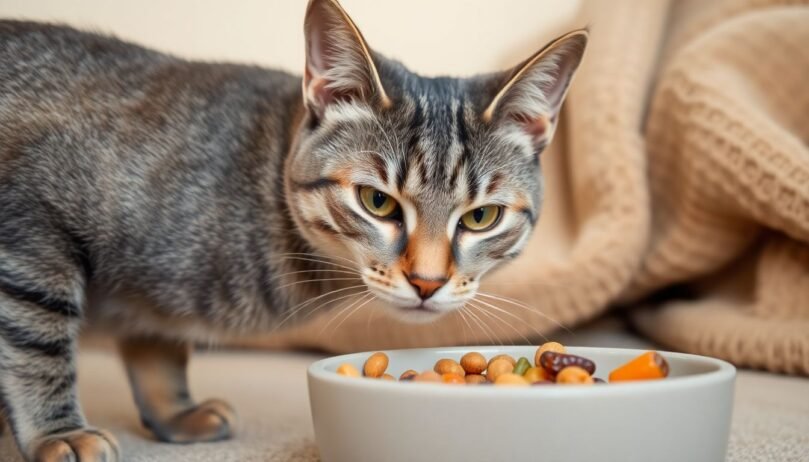Tips for Dealing with a Picky Pet Cat Eater
- 23 January 2025
- BuyAPet Editorial Team
- All Cats, Cat Health
Conquering the Cat Food Conundrum: Tips for Dealing with a Picky Eater
From medical checkups to texture trials and calm feeding spaces—use these vet-friendly steps to turn finicky bites into purr-worthy meals.
😺 Written for cat parents•Reading time: 6–8 mins
🧐 Understanding Your Cat’s Picky Eating Habits
Why is my cat a picky eater?
Cats can turn fussy for many reasons. Medical issues—like dental pain or tummy discomfort—can make eating unpleasant. Watch for signs of pain, drooling, pawing at the mouth, or litter-box changes.
The role of genetics
Some breeds (e.g., Siamese, Persian) are often described as more selective. Knowing your cat’s tendencies helps tailor texture, flavour, and routine.
Environmental factors
Noise, schedule changes, or past food aversions can dampen appetite. Cats thrive on stability; a calm, predictable setup supports better eating.
🔎 Identifying the Root Cause of Food Aversion
Medical examination
Before switching diets, book a vet check to rule out dental disease, GI upset, or other conditions that suppress appetite.
Food intolerance testing
If allergies are suspected, your vet may recommend a limited-ingredient or hydrolyzed-protein trial to pinpoint triggers.
Behavioral assessment
Log mealtimes, portions, what was eaten, and any behaviours. Sudden changes (sniff, walk-off, or only licking gravy) can be clues.
🔄 Gradual Food Transition Strategies
Mixing new and old food
- Days 1–2: 75% old + 25% new
- Days 3–4: 50% old + 50% new
- Days 5–6: 25% old + 75% new
- Day 7+: 100% new (if stools/behaviour are normal)
Temperature matters
Most cats prefer room temperature. For wet food, warm gently and stir to lukewarm to boost aroma—never hot.
Presentation techniques
- Try shallow, wide dishes (whisker-friendly) or stainless/ceramic bowls.
- Offer smaller, fresher portions; cover and refrigerate leftovers promptly.
🍽️ Enhancing Food Appeal and Variety
Wet vs. dry
Wet adds hydration; dry is convenient and can support dental health. Many cats do well with a mixed approach.
Adding flavour enhancers (use sparingly)
- A teaspoon of tuna water (not brine), or low-sodium chicken broth.
- A sprinkle of catnip or bonito flakes as an occasional topper.
Introduce different textures
Rotate formats to discover favourites: pâté, mousse, shreds, chunks in gravy.
🏡 Creating a Positive Feeding Environment
Designated feeding area
Serve meals in a quiet, low-traffic spot away from litter boxes and noisy appliances.
Consistent feeding schedule
Predictability builds appetite. Offer meals at set times. Remove uneaten food after ~20–30 minutes.
Interactive feeding
Puzzle feeders, snuffle mats, or scatter feeding add mental stimulation and can boost interest in meals.
🩺 When to Seek Professional Help
- Refusing food for 24–36 hours (kittens/seniors: sooner).
- Weight loss, lethargy, vomiting/diarrhoea, or sudden behaviour changes.
- Recurring pickiness despite slow transitions and environmental tweaks.
✅ Conclusion
- Rule out health issues, then test textures, proteins, and temperatures.
- Use a calm space and a consistent schedule.
- Transition gradually; track results; seek expert help when needed.
❓ Quick FAQs
- How long can a healthy adult cat safely skip meals?
- Skipping a single meal may happen, but prolonged refusal can be risky. If your cat skips 24–36 hours, call your vet.
- Should I free-feed or offer set meals?
- Set mealtimes help monitor intake and build routine—especially helpful for picky eaters.
- What’s the best way to test for food sensitivities?
- Work with your vet on a structured elimination or hydrolyzed-protein trial for several weeks.
This article offers general guidance and is not a substitute for veterinary advice.
